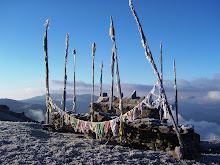Ayora-Diaz (2000). Imagining Authenticity in the Local Medicines of Chiapas, Mexico. Critique of Anthropology. 20(2): 173-190.
One important thing when considering other forms of healing not-biomedical such as the so-called “local medicines” is how people think about them, which symbolical and material efficacy it has for producers and users, and more importantly in this case what non-indigenous people directly related with indigenous people such as a NGO’s workers and other “foreigners” (such as tourists) may view them. In San Cristóbal de las Casas (Chiapas) there is an overlapping and intricate situation in which travelers and tourists embodying a “tourist gaze” (the idea of bracketing everyday life) come to be in contact with indigenous populations who are consumed as exotic and, in so doing, tropes of “community”, “solidarity” and “harmony with nature” are filtered through nostalgic views that divide “them” as “authentic” and “us” as “artificial”. So in this context authenticity plays a key role in how others see indigenous people (and how indigenous people portray themselves). Hybrid forms in local practices are considered politically incorrect, a break in their “cultural intimacy.” The author identifies two strategies that operate to protect the local sense of cultural intimacy: the establishment of the parameters that legitimize local ‘indigenous’ medicines, and the institutionalized confinement of religious medical practice to the museum and the past. The particular site of Chiapas is relevant to think on multiple forms of healing because there is a multiplicity of practices, practitioners and users beyond biomedicine, alternative and local medicines. Here is where the perception of authenticity plays a big role. Because users have to rank these heterogeneous forms of medicine according to their authenticity or lack of. In some places there is even certain tolerance from the biomedicine to local healers, for instance, in Comitán there are three Tojolabal-speaking healers working in the hospital (although “cosmopolitan doctors” –this is how the author refers to biomedical doctors– look down on them and call them as witches). There is also an Organization of Indigenous Healers (OIH) that tries to keep some power over their public image but it is in constant struggle with the “rational” legitimacy of the “cosmopolitan healers”. Still the problem is how local healers are portrayed through a romanticized and nostalgic view of indigenous life by the ladinos and mestizos who work in the OIH, and how these views imply a lot of assumptions (healers belong to a community, communities deal through consensus, ownership of land is communal and so after consensus healers can receive a piece of land for growing their medicinal plants, a true indigenous healers should not be interested in receiving money, and local healers cure with plants) and consequences to who may be helped by the organization. The tension here is again about authenticity, more precisely how authenticity is conceived. For the OIH a “real indigenous healer” has to represent his community and his community has to choose him, which is not always the case. Ayora-Diaz shows that local healers within the OIH tend to portray their processes of gaining healing knowledge as a learning one, whereas healers outside the organization refuse this image saying that “Local medicines are a gift from God; not something one can learn from anyone” (182). More importantly, the OIH also produces the Museum of Maya Medicine, which tries to capture the real Indianness and “authentic” “modern traditional” medicine; these are according to Ayora-Diaz “hyper-real healers within a simulacrum of community and tradition” (185). Here authenticity and purity of knowledge has become commoditized, and local people have to play this game with foreigners in order to keep their own forms of hybridization. One of the richness of this text is that engage with multiple forms of perceiving and acting upon the use of “cosmopolitan” and “local” medicines. Only at the end he mentions how tzeltal healer combine local and cosmopolitan medicines to heal sooner. And I think the author could have thought a little bit more about the local use of the wide palette of choices and this combination and hybridity. He only focuses on how biomedical and local healers negotiate ideas of authenticity for local healing knowledge but he could have added how their also negotiating ideas of authenticity for the “cosmopolitan” medicine.
Querido diario
Hace 3 días.


No hay comentarios.:
Publicar un comentario